Issues Management Monthly: Measuring Progress
(By Tom Lynch-Staunton for CCA Action News)
On April 1, 2018 we entered into a new funding model for the Canadian Beef Cattle Check-Off. The most significant changes to the national check-off were the increase to $2.50 per head from $1 per head, and the official creation and funding of an issues management program, now known as Public and Stakeholder Engagement. In addition to funding marketing (Canada Beef) and research (Beef Cattle Research Council), the national check-off enables investment into addressing consumer concerns and issues impacting public confidence and trust in how we raise beef. With the Issues Management pilot project now wrapped up, it is a good time to reflect on the major and recurring issues we have dealt with over the past two years and anticipate the challenges we will face going forward in terms of how to measure our progress in building public trust in a meaningful and transparent way.
The two issues we have dealt with the most over the last two years have been public perception about 1) the environmental impacts of beef production and 2) the nutritional benefits of eating beef. Of course, many times these issues become interrelated, for instance, when we see people encourage others to eat less meat for reasons they’ve linked to the health of the environment. This increase in public discourse around issues like climate change, or revisions to Canada’s Food Guide, for example, is likely due to a general overall heightened awareness given both have been in the news a lot and are a source of public interest. The Public and Stakeholder Engagement team, which includes me and Stina Nagel, and our national and provincial partners has largely focused on addressing misleading claims in the media on beef nutrition and beef’s impact on the environment. Fortunately, we have many good stories to tell, and many avenues with which to communicate them to diverse audiences including industry staff, producers, and partners in academia or government.
I believe we have already made a positive impact. That being said, it is hard to measure if we have actually made an impact on public trust or not. Fortunately, with increased funding, we will be able to invest in projects and partner with organizations that can measure changes in public and consumer perceptions about a product and how it was produced. For example, we will be able to work with groups like the Canadian Centre for Food Integrity which is already developing baselines in public perception with the intention of measuring the impacts of the actions we take. That way, we can adjust our actions if we aren’t moving the needle or redirect resources to higher priorities.
Of course, we will be able to get some indication of impact already such as changes in consumer demand for beef. Generally, if consumers are willing to continue to pay higher prices for beef, it means they remain confident in the product and by extrapolation, we must be doing something right. The trouble with this is to pin-point our activities that contributed to a positive perception. Then we need to determine how resilient that favourable perception is, or if it will be vulnerable to being undermined by misleading information. Monitoring in this area will provide clues over time to inform our activities that will see consumers remain confident in paying for beef and feel good about choosing to do so.
One of the goals of the Public and Stakeholder Engagement program is to prevent consumer issues from becoming crises, or from causing unnecessary damage to our industry. However, how does one measure an “avoided” crisis or issue? If we weren’t able to build a relationship with Earl’s, what would the impact have been if they continued to sell what consumers were led to believe to be the only “humanely” raised beef in North America? Things like the recommended revisions to Canada’s Food Guide to encourage more plant-based proteins over animal-based proteins could damage public perception of beef, for misguided reasons. If no one in our industry challenged these issues, how would anyone ever know we had concerns or question the wording of the proposed changes?
Just having the ability to respond with the people and resources will go a long way in maintaining public confidence. We know that if we don’t respond to misleading articles and statements, then certainly no one is going to hear our messaging – much like in hockey, where if you never shoot at the net, it’s pretty much guaranteed you won’t score. But if we are able to respond, consumers will hear the other side of the story, which is our story. I recently sat on a panel for a public forum at the University of Calgary with approximately 300 attendees talking about sustainable beef. Afterwards, many people seemed to be quite receptive to my points, and I sensed they were relieved to know that they can continue to enjoy eating beef and be assured that they are not ruining the environment in doing so.
The Public and Stakeholder Engagement team can measure its outputs, for example, the number of articles and fact sheets we have written or interviews in the media that we have accommodated. We have rough estimates on the costs of addressing issues, and the savings involved in reducing duplication among our industry organizations.
The real challenge will be in measuring the impact of our actions on public perception, and how any change in perception results in increased purchasing behaviour or further advocacy. Now with new investment in the national check-off, we can start to measure whether we are having an impact and create a more targeted strategic response. Once we have this information, we will be able to invest producer’s dollars where we have the most impact.
Older Newer